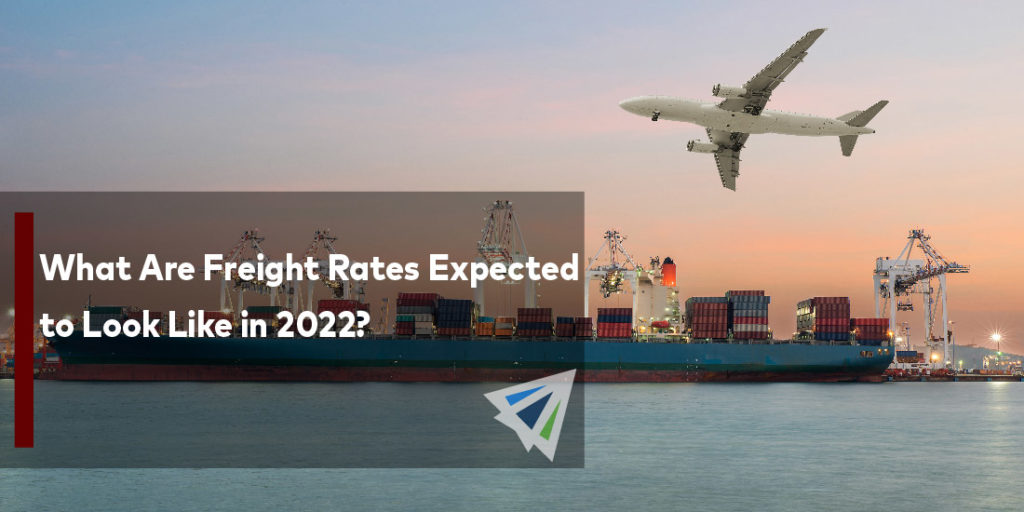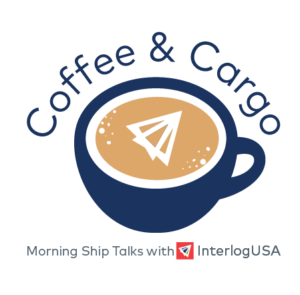Competitive Edge
January 26th, 2022
Stay Current with Interlog’s Weekly Newsletter:
Sign up for our next Coffee & Cargo webinar –> CLICK HERE
To watch last week’s webinar –-> CLICK HERE
Ocean Freight Market Update
Headlines
- The United States and the United Kingdom have agreed to begin talks on removing former President Trump’s import taxes on British steel and aluminum.
- The Port of Los Angeles handled a record 10.7m TEUs in 2021.
- Yantian port is cutting the receiving time for export laden containers as the terminal yard nears capacity.
UPDATE: U.S./Canada Port Congestion
- Savannah: 13 Backlogged Vessels
- Charleston: 29 Backlogged Vessels
- Norfolk/Newport News: 42 Backlogged Vessels
- Los Angeles/Long Beach: 73 Backlogged Vessels
- Note: This does not include LA/LB bound vessels waiting at ports of origin
- Vancouver: 72 Backlogged Vessels
IMPORT: Asia to North America (TPEB)
Recent Developments:
- Vessel dwell times at U.S. and Canadian WC ports remain critical as pre-CNY cargo piles up
- COVID-19 Omicron variant is affecting availability of dockworkers—estimated 10% are staying home (as of last week)
- Shippers with urgent cargo or depleted inventories are paying premium rates in order to secure space pre-CNY
Rates: Rate levels remain elevated. The premium market is strong for pre-CNY sailings which has risen premium rates.
Space: Space remains critical.
Capacity/Equipment: Capacity remains severely under. Equipment deficits critical.
TIPS: Book at least 4 weeks prior to CRD. Strongly consider premium service and carrier IPIs through the PSW gateway. Be flexible as it comes to equipment and routing.
IMPORT: Europe to North America (TAWB)
Recent Developments:
- Schedule reliability is anticipated to worsen as winter weather conditions affect the North Atlantic
- Port omissions and port rotation changes will continue into the mid-term.
Rates: Rates levels to remain notably high. Further increases are expected for February.
Space: Space remains critical, especially for the USWC.
Capacity/Equipment: Capacity remains tight for both North Europe and Mediterranean services. Equipment availability at ports, however shortages remain at inland terminals.
TIPS: Book 5 or more weeks prior to CRD. Strongly consider premium service for higher reliability and no-roll guarantees.
EXPORT: North America to Asia
Recent Developments:
- Diminishing schedule integrity is contributing to void sailings, delays, vessel cut-offs at ports, and challenging post earliest return dates
- Vessel arrivals remain fluid for USWC POLs
Rates: GRI advisories are out for transshipment ports and Oceania destinations for early February.
Capacity: Available capacity remains fluid for USWC POLs. USEC capacity has become for readily available.
Equipment: IPI origins remain adversely affected by deficits on containers and chassis. Standard equipment availability has not been an issue, but special equipment is remains elusive.
TIPS: Book 4 to 6 weeks prior to CRD to secure equipment and vessel space.
AIR FRIEGHT: United States
- Export demand to gradually increase late January with capacity remaining manageable.
- Larger shipments from major outbound gateways can take 2 to 3 days from booking to uplift.
- Most terminals provide reduced free time for storage and have earlier close-outs for exports to meet throughput times and screening requirements.
- Several flight cancellations—domestic and international—have happened due to Omicron concerns.
- LAX/ORD/JFK terminals have reduced the backlog of inbound cargo rendering a positive effect on export side of things.
- Rates to Latin America, Europe, and Asia are all gradually increasing compared to the beginning of January.
- Average dwell time at European hubs is slightly reducing as congestion improves.
TIPS: Book early considering the current dwell time at airports.
Tip Of The Week: Cargo Insurance
Having cargo insurance can provide not just financial reassurance but peace of mind throughout the entirety of the shipment process, learn more here.
Freight News
Updates on Ports out on the East, West, and Gulf Coast
Ports on the East and West coasts have been seeing record years, as the gulf coast ports have seen more of a decrease.
Ports on the Gulf Coast:
The Port of NOLA saw container volume for 2021 down 15% year-over year, the container export side seeing a decrease by 12%, and for the calendar year of 2021 the Port totaled 488,199 TEUs, approximately a 15% decline compared to 2020, according to Freightwaves. Breakbulk and bulk cargo container shipments were reportedly up by 125% for fiscal year 2022 year-to-date, compared to the same time frame in 2021. The Port of Houston reportedly moved 15% more total cargo in 2021 than it did in 2020, but also saw a decrease in loaded exports by 13%. While the Port of Corpus Christi reportedly moved 167 million tons of cargo during its fiscal year of 2021, an increase of 4.7%
Ports on the West Coast:
Not that it should come to a surprise for anyone, but the Port of Long Beach moved more cargo in 2021 than any year in its history. The Port handled 9,384,3688 TEUs, up 15.7% from 2020, imports also increased by 14.6% year-over-year, however exports did see a decrease of 2.6% according to Freightwaves. Empty containers skyrocketed to a reported 27.5% increase, which has been a persisting issue at the Port. The ports in the west coast are still seeking improvements and solutions to improve efficiency and deal with the current supply chain issues. The port plans to address those challenges and what they plan on doing moving forward in the 2022 State of the Port event on February 9th
Ports on the East Coast:
Experts are anticipating another successful year for East Coast ports in 2022. In 2021 the Port of Savannah saw record volumes, moving 5.6 million TEUs which increased volumes by 20% year-over-year reported Freightwaves. Intermodal rail volumes at the Port of Savannah reportedly saw an increase by 10% or nearly 1 million TEUs. Last month the Port of Virginia reported that in November, year-over-year volumes were at an all-time monthly record – up around 4%. Imports and import empties were also up nearly 465% from 2020, but export loads and empties year-over-year saw decreases of 5.6% and 6.3%, reported Freightwaves.
The White House announces $14 billion for ports, waterways, and coastal investments
On January 19th, the White House announced $14 billion dollars for ports, waterways and coastal investments to help continue to strengthen the supply chain along with repairing damage, and future weather defenses. In addition to the projects funded by the DOT, this new funding will be used for over 500 projects across 52 states and territories by the U.S. Army Corps of Engineers, Maritime-Executive says. Some of the projects include 15 feasibility studies, preconstruction engineering and design for five projects, 19 construction projects, and 22 new projects that will be funded in the construction account.
These new investments and projects will have a direct impact on the ports of Long Beach and the Norfolk harbor in Virgina. According to Maritime-Executive, the Port of Long Beach will see an additional $8 million dollars to improve commercial navigation and the Port of Norfolk will receive $69 million to improve navigation, safety for larger vessels, and expand capacity.
Sign up for our
industry answers
Our team works to provide valuable, unique, and relevant content to assist you in finding solutions. Sign up now.

